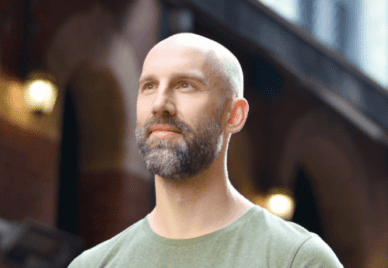
Shaping Research Software: An Interview with Ryan Wick
Exploreabout Shaping Research Software: An Interview with Ryan Wick
Health professionals and researchers now have an easier way to access key information
A recently completed project, Characterisation Data Enhanced Virtual Laboratory (CDeVL), is giving health professionals and researchers faster, easier access to crucial health-related information.
The Characterisation Virtual Laboratory (CVL), an outcome of the CDeVL project, is a free, cloud-based virtual desktop workbench that makes translating complex image and microscopy data into accessible information simple and fast. It gives researchers and clinicians access to timely data, allowing them to run and modify experiments and other research activities in real time. This means that changes can be immediately identified and necessary modifications can be made quickly.
Highly complex instruments, such as MRI equipment, neuroimaging and electron microscopes, create enormous volumes of data that require extensive processing and visualisation to be accessible to end users.
CVL streamlines the process by integrating the imaging instruments with specialised high-speed computing. As a result, remote desktop users — who may be working in facilities without large computing capacity and may not have sophisticated computing skills — can get the data they need, in a format they understand.
CVL also includes a community of researchers, university lecturers and health professionals who develop and maintain materials for training and encourage best data management practices.
CDeVL recently completed a project that further enhanced CVL’s capabilities. It expanded the availability of scientific tools and libraries and broadened the user community. It also extended training opportunities for users.
Tom Shaw, a neuroimaging researcher at University of Queensland’s Centre for Advanced Imaging, was involved in the new round of training. He explained some of the virtual lab’s benefits.
“Clinicians at Queensland Health, for example, are now able to get access to their data quickly, thanks to using CVL,” Tom said.
Queensland health professionals or researchers who aren’t familiar with sophisticated programming languages or Linux, and aren’t accustomed to working with command lines can still get the information they need according to Tom.
“It bridges the gap. They simply log on with their local laptop or desktop computer and, with the click of a button, upload and analyse or visualise the data they need, without having to have specific technical computer training.”
CVL also gives users a free, seamless access to Monash’s Massive computer, a high-performance research data processing facility, which provides rapid large-scale analysis.
Processing and analysing neuroimaging data is challenging, as it requires both detailed scientific knowledge and familiarity with the syntax and options of a number of tools involved.
CVL allows health professionals and researchers all over Australia to access and use this crucial data without having specialised programming skills or access to a large computer where they work.
“It puts powerful tools into the hands of those who need them,” Tom said.
The ARDC provided co-investment to the CDeVL project which was led by Monash University. It also included ANSTO, the National Imaging Facility, Microscopy Australia, University of Queensland, University of Sydney, University of Wollongong and University of Western Australia.